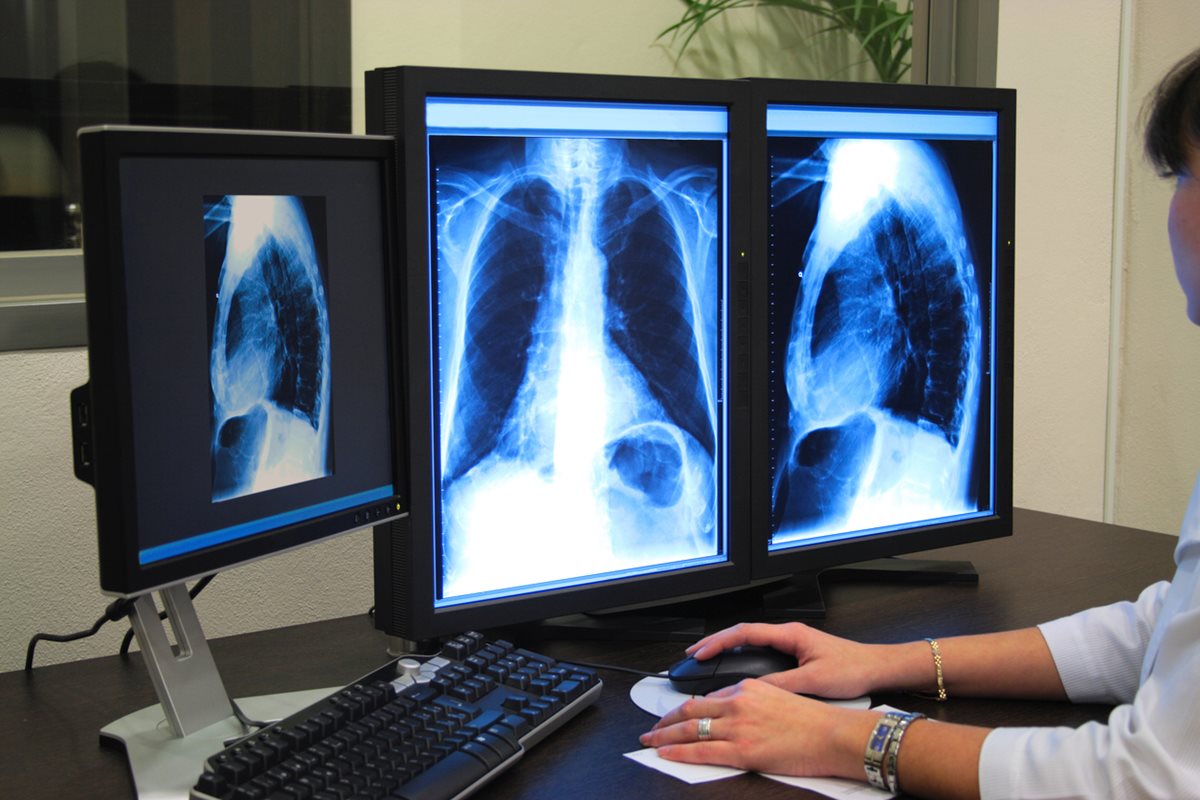Plans to increase the number of diagnostic and therapeutic radiographers in England by 18% by 2021 were announced today by health secretary Jeremy Hunt, as part of phase 1 of the Cancer Workforce Plan.
The plan claims that "Diagnostic radiographer numbers will increase by 2227 full time equivalents and there will be 1560 more FTE therapeutic practitioners."
Health Education England say they were already planning to invest in 1890 more radiographers and the aspiration in the Cancer Workforce Plan Phase 1: Delivering the Cancer Strategy to 2021 document will mean "955 more practitioners than the previous number - a total increase of 2845 FTE radiographers."
As well as training new practitioners, the Return to Practice initiative will support the anticipated increase in the activity of the NHS breast screening programme.
In addition, there will be investment in 300 reporting radiographers to "support an increase in the capacity for early diagnosis as part of a national programme to ensure quality and consistency."
The report notes that, "Radiographer reporting is an effective, efficient and safe way of meeting rising demand for imaging services and maintaining or improving time to diagnosis and crucially free up clinical radiologists to use their specialist skills in more complex cancer and other cases.
"HEE will work with the Society of Radiographers and the Royal College of Radiologists to develop the skills of radiographers and improve retention, relieve the pressure on clinical radiologists and most important of all, increase the capacity for early diagnosis for the benefit of patients.
"HEE will work with the professional colleges to develop national standards for image interpretation and to establish multi-professional academy-style training hubs for this purpose."
The Workforce Plan expresses concerns about the number of radiographers in England who are not employed by the NHS - 24% in 2016: "There were 5,735 registrants in England who could have potentially chosen to work in the NHS but did not do so. This could indicate challenges with the relative attractiveness of the NHS as an employer, an increase in commercial organisations providing NHS services, or growing diversity of employment opportunities within the profession.
"Unless further action is taken to increase supply, it is unlikely we will have sufficient diagnostic radiographers to deliver our 2021 ambitions."
The document says improved retention is a priority, with "28% of diagnostic radiographers expected to leave for non retirement reasons. HEE will undertake some urgent qualitative research with the Society of Radiographers and NHS Employers to understand why so many are leaving and to reduce the attrition/increase the retention rate by 10% thereby achieving additional supply of 379fte radiographers. We will also explore options for keeping experienced staff longer. A 5% improvement in the retirement rate would deliver 64 more staff by 2021."
The document recognises the importance of the workforce in the delivery of current and future cancer plans: "Patients will not reap the benefits of these new developments unless we have sufficient staff with the right skills and support to deliver them... A workforce plan is, in effect, the delivery plan for the NHS."
The plans also include the employment of more consultants working in cancer, as well as clinical radiologists, gastroenterologists, oncologists, histopathologists, and endoscopists. The document encourages the increasing use of integrated multi-professional teams to "deliver the required increase in capacity and competencies."
The background to the workforce strategy is recognition the need for services is going to continue to grow because the incidence of cancer is increasing, as well as the number of people who are diagnosed at an earlier stage. More than half of people diagnosed with cancer now are surviving for at least 10 years, which requires ongoing support from the workforce. Older patients also more likely to have other health problems.
"The Cancer Workforce Plan document is welcomed by the Society and College because it looks at many of the issues that the organisation and members have argued need addressing if diagnostic and therapeutic services are going to meet the needs of cancer pateints for a timely, effective and caring service," commented Spencer Goodman, the SCoR's professional officer for radiotherapy, cancer care and workforce planning issues.
A note of caution made in the foreword to the report reminds the government that it must play its part: "Whilst HEE is ultimately responsible for developing the Cancer Workforce Plan for England, it does not hold all of the levers.
"Success will require the Department of Health to continue efforts to ensure that contracts, pay and pension arrangements enable the NHS to become ‘the employer of choice’, so that employers can offer more flexible and rewarding jobs, and for royal colleges and regulators to work with us to identify and remove the barriers to more flexible training and careers."
The foreword continues, "If workforce remains an afterthought once the key policy and funding decisions have been made, or if ‘demand’ continues to be determined by affordability rather than forecast activity, then the gap between what is technologically possible, what is on offer to all patients and what is a sustainable workload can only grow."
Health Education England is planning to publish a second document next summer looking at longer term aspirations for the cancer workforce.
The Cancer Workforce Plan Phase 1: Delivering the cancer strategy to 2021
